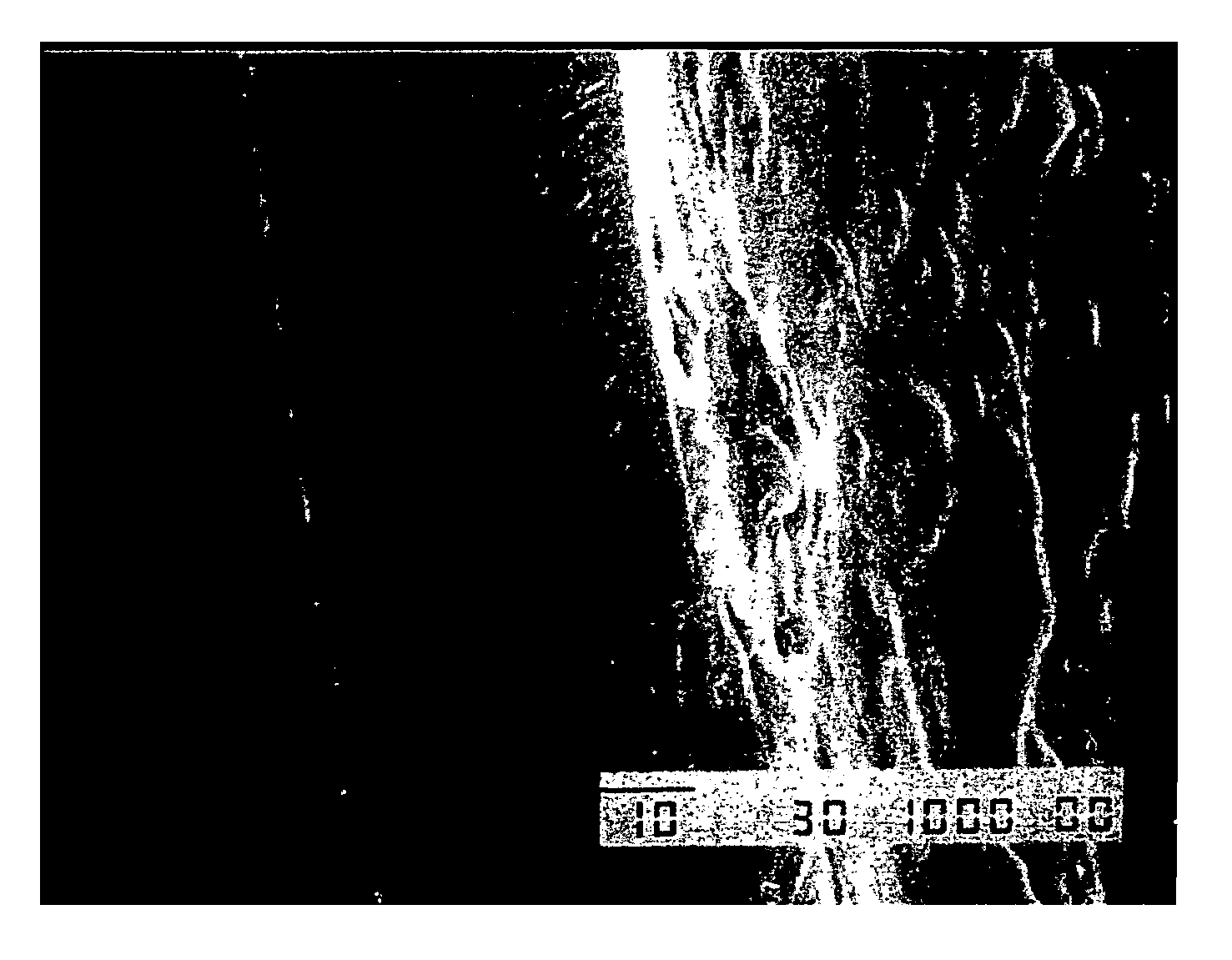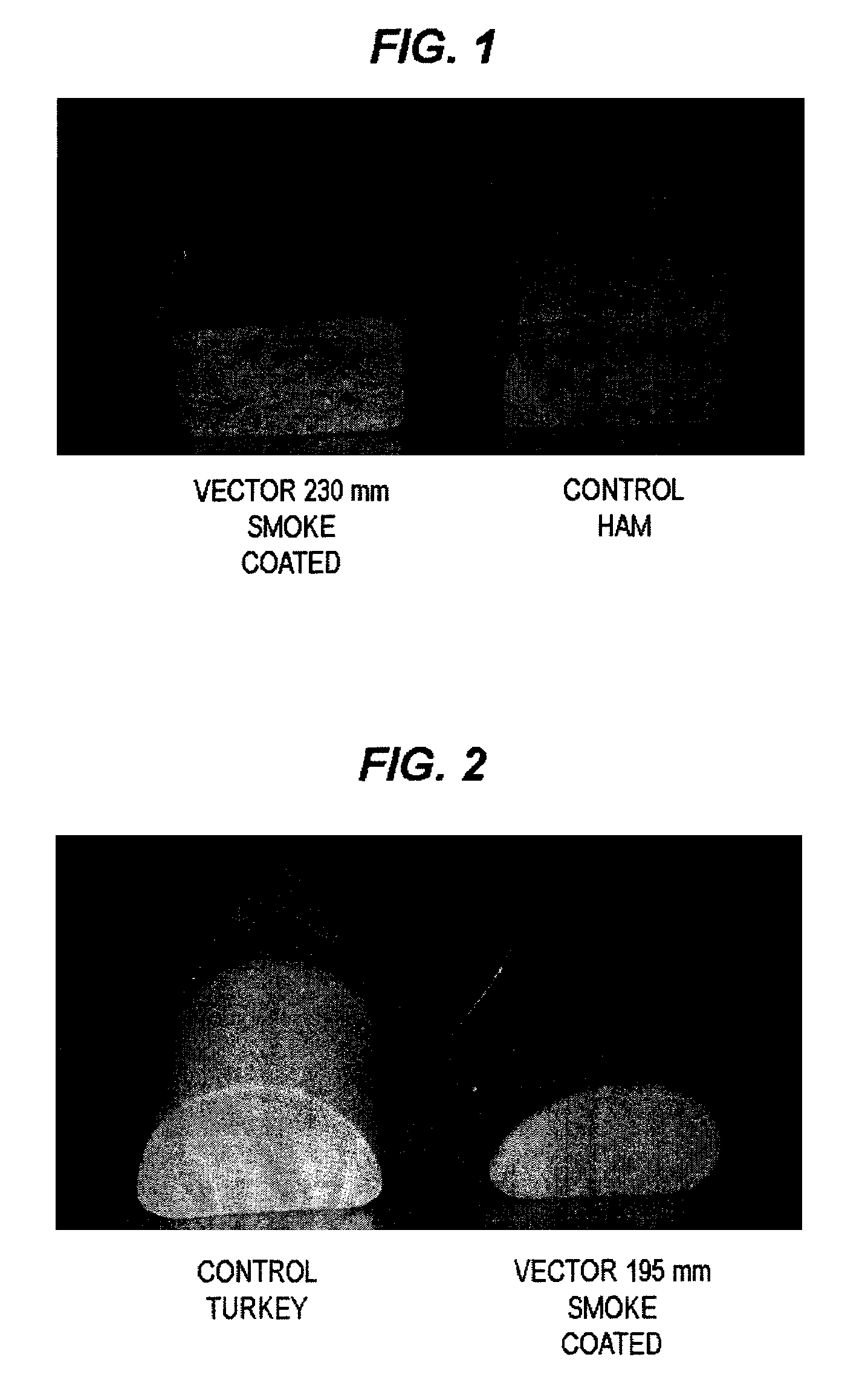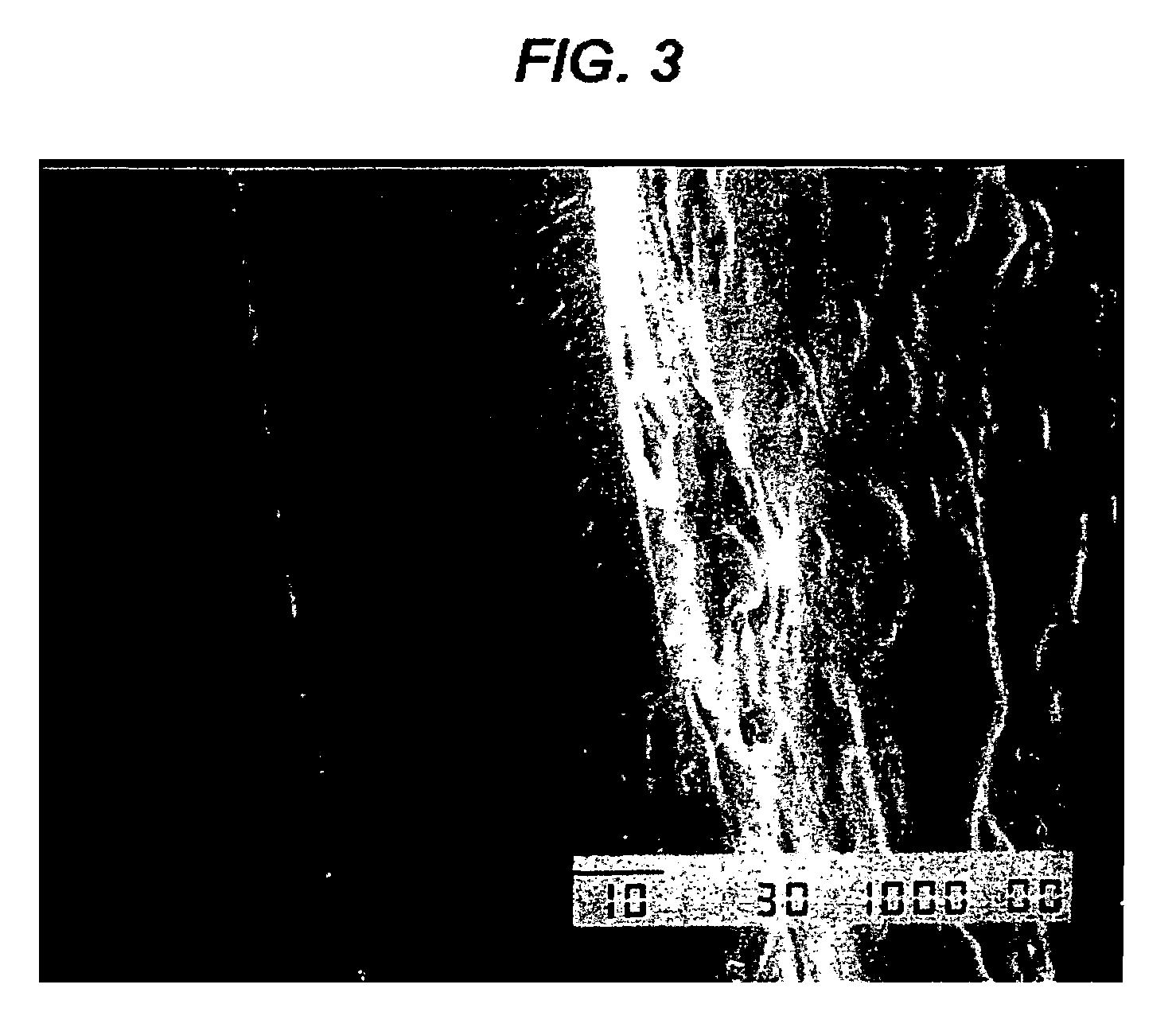Film having a liquid absorbed therein
a film and liquid technology, applied in the field of film, can solve the problems of labor-intensive smoking by such traditional techniques, strict restrictions on the types of limited materials which can be used to form such articles
- Summary
- Abstract
- Description
- Claims
- Application Information
AI Technical Summary
Benefits of technology
Problems solved by technology
Method used
Image
Examples
example 1
Coating Formulations
[0063]Coating formulations were prepared by Red Arrow according to Table 1.
[0064]
TABLE 1CoatingCoating CompositionCodecomponentwt %C / C3 / 02 / Maillose 45194.63C1 / 03Propylene Glycol5.00Dioctyl Sulfosuccinate0.25Xanthan Gum0.12CxLiquid smoke3100.0C7Maillose 4594.875Propylene Glycol5.00Methocel2 SGA16M0.125C9Liquid smoke94.875Propylene Glycol5.00Methocel SGA16M0.125C20Maillose4598.4Propylene Glycol1.4Methocel K 100M0.2C21Liquid smoke98.4Propylene Glycol1.4Methocel K 100M0.21Maillose 45 contains 27 wt % hydroxy acetaldehyde, is a colourant available from Arrow Products Co. LLC, Manitowoc, WI and formed by the pyrolysis of sugars.2Methocel is methyl cellulose available from Dow.3Liquid Smoke is a concentrated liquid smoke product having hydroxy acetaldehyde content of between about 30 to about 35 wt % and is available from Red Arrow Products Co. LLC, Manitowoc, Wl.
example 2
Corona Treatment of a Polyamide Film
[0065]The following trials were conducted with a three layer heat shrinkable tubular film having an outer polyamide layer, an intermediate polypropylene copolymer layer and an inner polyamide layer. The inner layer is a blend of nylon 6 and about 16% PVPP. This film will be referred to hereinafter as DC-1.
[0066]The tubular film was internally corona treated at 600 W using an electrode arrangement similar to that as described in U.S. Pat. No. 5,296,170 in which one of a pair of electrodes is placed in contact with one side of an inflated tube. In this way, a corona discharge is generated in the air space within the tube. However, a significant difference between the method as described in U.S. Pat. No. 5,296,170 is that in the present case, much higher power levels are used. Although U.S. Pat. No. 5,296,170 does not describe the power level in watt density, the examples show an increase in dyne level of a polyethylene film from 31 dyne to 42 and 41...
example 3
Shirring Stuffing and Processing
[0090]Films were activated and compositions applied thereto in a manner as described in Example 2. The films, after allowing time for the coating to attach and / or be absorbed onto the rolls were shirred into “sticks”. Shirred tubular casings may be prepared by conventional shirring machines as known in the art.
[0091]Ham or turkey meat products were then pushed through a stuffing horn into the shirred casings.
[0092]The encased food products were then cooked by heating in an oven, with steam or hot water set for a length of time for the product to reach an internal temperature of 160 F. The oven was maintained at 100% relative humidity and a temperature of 185 F. The steam and hot water temperatures are noted in Table 3. Cooking was conducted as soon as practicable and at various times after stuffing as noted.
[0093]Controls were conducted in the absence of corona treatment and impregnation.
[0094]The results are summarized in Table 5.
[0095]
TABLE 5Product...
PUM
| Property | Measurement | Unit |
|---|---|---|
| thickness | aaaaa | aaaaa |
| temperature | aaaaa | aaaaa |
| power | aaaaa | aaaaa |
Abstract
Description
Claims
Application Information
 Login to View More
Login to View More - R&D
- Intellectual Property
- Life Sciences
- Materials
- Tech Scout
- Unparalleled Data Quality
- Higher Quality Content
- 60% Fewer Hallucinations
Browse by: Latest US Patents, China's latest patents, Technical Efficacy Thesaurus, Application Domain, Technology Topic, Popular Technical Reports.
© 2025 PatSnap. All rights reserved.Legal|Privacy policy|Modern Slavery Act Transparency Statement|Sitemap|About US| Contact US: help@patsnap.com



